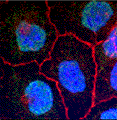Biochemistry, Department of
ORCID IDs
Document Type
Article
Date of this Version
2020
Citation
Genome Biology (2020) 21:60
Abstract
Background: Mango is one of the world’s most important tropical fruits. It belongs to the family Anacardiaceae, which includes several other economically important species, notably cashew, sumac and pistachio from other genera. Many species in this family produce family-specific urushiols and related phenols, which can induce contact dermatitis.
Results: We generate a chromosome-scale genome assembly of mango, providing a reference genome for the Anacardiaceae family. Our results indicate the occurrence of a recent whole-genome duplication (WGD) event in mango. Duplicated genes preferentially retained include photosynthetic, photorespiration, and lipid metabolic genes that may have provided adaptive advantages to sharp historical decreases in atmospheric carbon dioxide and global temperatures. A notable example of an extended gene family is the chalcone synthase (CHS) family of genes, and particular genes in this family show universally higher expression in peels than in flesh, likely for the biosynthesis of urushiols and related phenols. Genome resequencing reveals two distinct groups of mango varieties, with commercial varieties clustered with India germplasms and demonstrating allelic admixture, and indigenous varieties from Southeast Asia in the second group. Landraces indigenous in China formed distinct clades, and some showed admixture in genomes.
Conclusions: Analysis of chromosome-scale mango genome sequences reveals photosynthesis and lipid metabolism are preferentially retained after a recent WGD event, and expansion of CHS genes is likely associated with urushiol biosynthesis in mango. Genome resequencing clarifies two groups of mango varieties, discovers allelic admixture in commercial varieties, and shows distinct genetic background of landraces.
Included in
Biochemistry Commons, Biotechnology Commons, Other Biochemistry, Biophysics, and Structural Biology Commons



Comments
© The Author(s).
Open access
https://doi.org/10.1186/s13059-020-01959-8